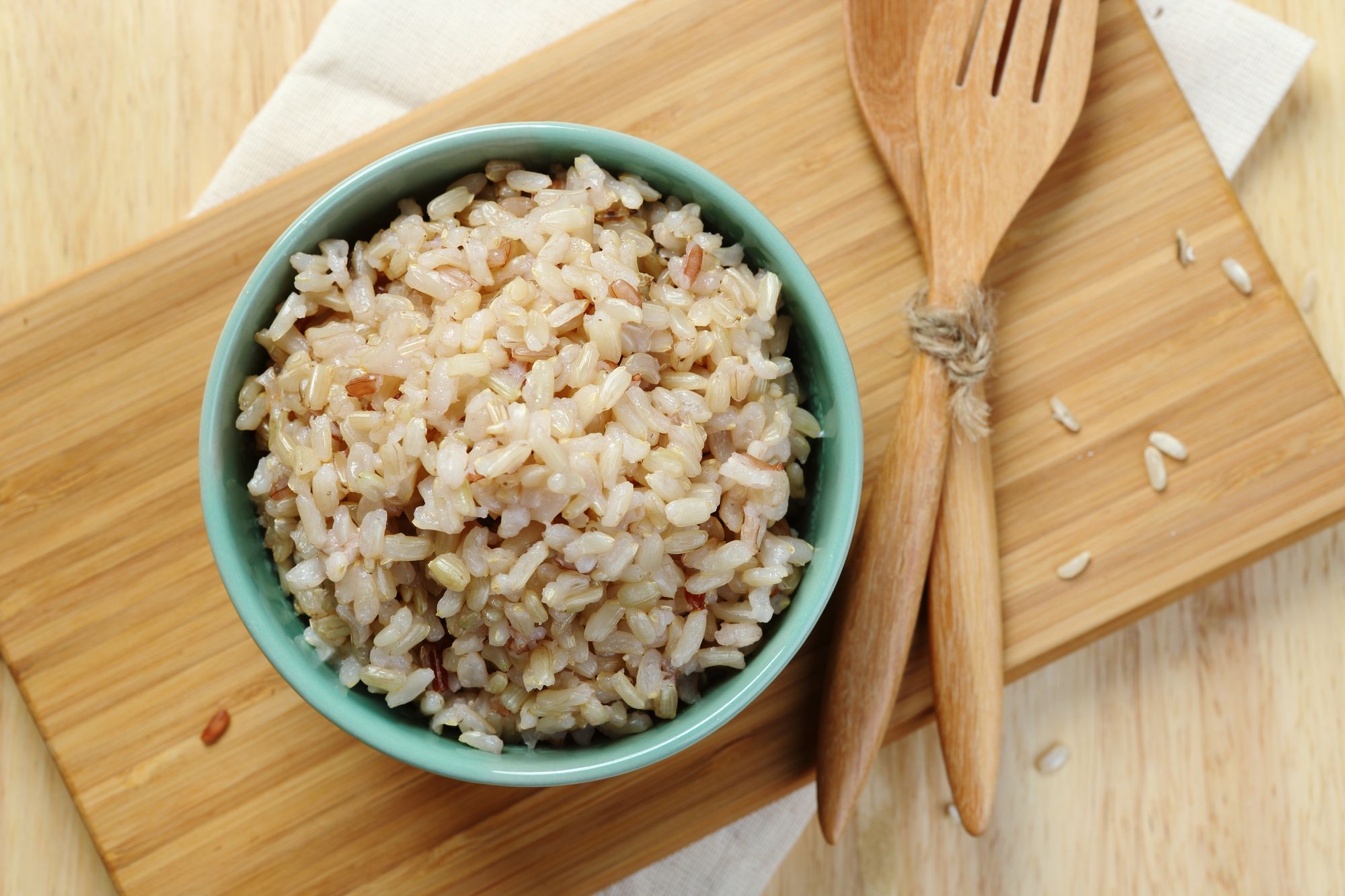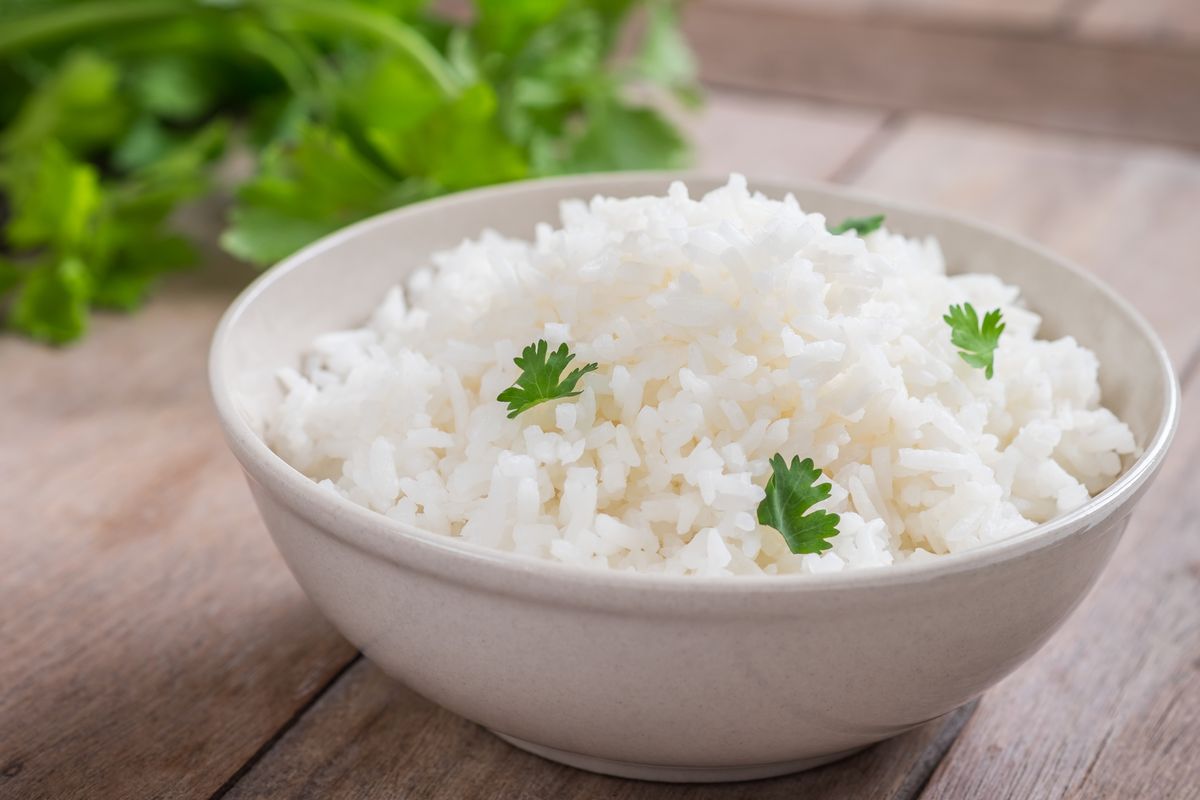White rice, loved for its versatility and ability to complement a variety of flavors, has long been a staple in many cuisines. However, its processing method raises questions about its nutritional value. Is white rice truly a healthy choice?
To unravel this complex query, we must consider various factors. On the positive side, white rice is low in fat and calories, making it suitable for inclusion in a range of wholesome dishes. On the flip side, the processing involved in producing white rice leads to the removal of its bran, germ, and husk, resulting in a significant loss of fiber and essential nutrients.
To shed light on the potential benefits and drawbacks associated with consuming this popular grain, we turned to expert dietitians. Their insights provide valuable information for those seeking a balanced perspective on white rice and its impact on health.
Examining the Nutritional Information

Delving into the nutritional information of a typical serving of white rice, here's what you'll find:
Macronutrients:
- 242 calories
- 4.4 grams of protein
- 0.4 grams of fat
- 53.2 grams of carbohydrates
- 0.6 grams of fiber
Micronutrients:
- 5.6 milligrams of calcium
- 3.7 micrograms of folate
- 53.9 milligrams of potassium
- 68.8 milligrams of phosphorus
- 24.2 milligrams of magnesium
- 0.4 milligrams of iron
These figures provide an overview of the macronutrient and micronutrient content found in one cup of cooked white rice, allowing for a better understanding of its nutritional composition.
Comparing the Nutritional Content: A Cup of Cooked Brown Rice

When evaluating the nutritional profile of a cup of cooked brown rice, here's what you'll discover:
Macronutrients:
- 218 calories
- 4.5 grams of protein
- 1.62 grams of fat
- 45.8 grams of carbohydrates
- 3.51 grams of fiber
Micronutrients:
- 19.5 milligrams of calcium
- 7.8 micrograms of folate
- 154 milligrams of potassium
- 150 milligrams of phosphorus
- 85.8 milligrams of magnesium
- 1.2 milligrams of iron
These figures illustrate the macronutrient and micronutrient composition found in a cup of cooked brown rice. By comparing it to white rice, individuals can gain insights into the nutritional differences between the two grain varieties.
Exploring the Benefits of White Rice

White rice, a widely enjoyed grain, offers several advantages that make it a popular choice. Let's delve into four key benefits:
- Source of Quick Energy: White rice, being a high-carbohydrate food, provides a rapid and easily digestible energy source. This characteristic makes it particularly beneficial for individuals engaging in physical activities or seeking a quick energy boost, as explained by Trista Best, MPH, RD, LD from Balance One Supplements. It's important to note that while white rice offers immediate energy, its effect may not be as sustained as that of brown rice or other whole grains due to the absence of fiber.
- Gluten-Free Option: An important advantage of white rice is its gluten-free nature, making it suitable for individuals with gluten sensitivities or celiac disease. Best highlights its value as a staple in gluten-free diets, offering an alternative grain option. However, consulting with a healthcare professional or dietitian is advisable to determine the most appropriate gluten-free grains for specific health needs.
- Retains Some Nutrients: Despite the processing involved, white rice still contains certain macro and micronutrients that contribute to overall nutritional intake. Mary Sabat MS, RDN, LD emphasizes that white rice includes essential nutrients like folate, thiamin, and iron, although at lower levels compared to brown rice. While brown rice offers higher nutrient content, white rice still provides some nutritional value.
- Low in Fat and Cholesterol: White rice is naturally low in fat and cholesterol, making it a suitable choice for weight management and maintaining heart health, according to Sabat. However, Harvard Health advises incorporating whole grains into your diet for optimal heart health due to their fiber content. If you prefer white rice for its low fat and cholesterol content, it's recommended to balance it with other whole grains throughout the day.
Examining the Drawbacks of White Rice

While white rice is widely consumed and appreciated for its taste and versatility, it's important to be aware of certain downsides associated with its consumption. Let's explore three key considerations:
- Reduced Nutritional Content: Compared to other whole grains, white rice undergoes more extensive processing that involves removing the bran and germ, resulting in a diminished nutritional profile. Trista Best explains that this refining process strips away essential vitamins, minerals, and antioxidants found in the outer layers of rice. In comparison to brown rice, which retains these nutrients, white rice offers fewer health-promoting compounds. For instance, brown rice contains significantly more fiber, iron, folate, and magnesium than white rice.
- High Glycemic Index: White rice has a high glycemic index (GI), meaning it can cause a rapid increase in blood sugar levels compared to foods with a lower GI. This characteristic can be problematic for individuals with diabetes or those aiming to manage blood sugar levels. Best recommends considering whole grain alternatives with lower GI values, while Sabat suggests moderating white rice intake and pairing it with fiber-rich foods to mitigate its impact on blood sugar levels. It's important to note that a food's GI alone does not determine its overall healthfulness, as the nutritional composition of the entire meal must be taken into account.
- Lack of Fiber: One notable drawback of white rice compared to other rice varieties is its low fiber content. The refining process removes the fiber, which is crucial for digestive health and promoting satiety. Best warns that the absence of fiber in white rice may lead to reduced feelings of fullness, potentially leading to overeating or less control over portion sizes. Insufficient fiber intake can contribute to digestive issues like constipation and increase the risk of certain diseases such as colon cancer. To address this, it's advisable to incorporate other fiber-rich foods such as vegetables, fruits, or beans into meals containing white rice.
Evaluating the Healthiness of White Rice

Determining the overall healthiness of white rice can be a nuanced task. With its lower fiber and nutrient content, coupled with a high glycemic index, white rice may not offer the same benefits as unrefined rice or whole grains.
However, there are certain situations where white rice can still be a suitable choice. If you're in need of a tasty carbohydrate option, particularly if you follow a gluten-free diet, white rice can serve as a viable option when consumed in moderation. Mary Sabat advises incorporating a variety of nutrient-rich foods alongside white rice to ensure a well-rounded diet.
It's important to consider the potential drawbacks associated with white rice and make informed choices accordingly. Moderation, diversification of the diet with healthier alternatives, and an emphasis on overall health and nutrition are recommended for individuals striving for optimal well-being.
In summary, while white rice may not be as nutritionally advantageous as other unrefined rice or whole grains, it can still be enjoyed in moderation as part of a balanced and varied diet.

